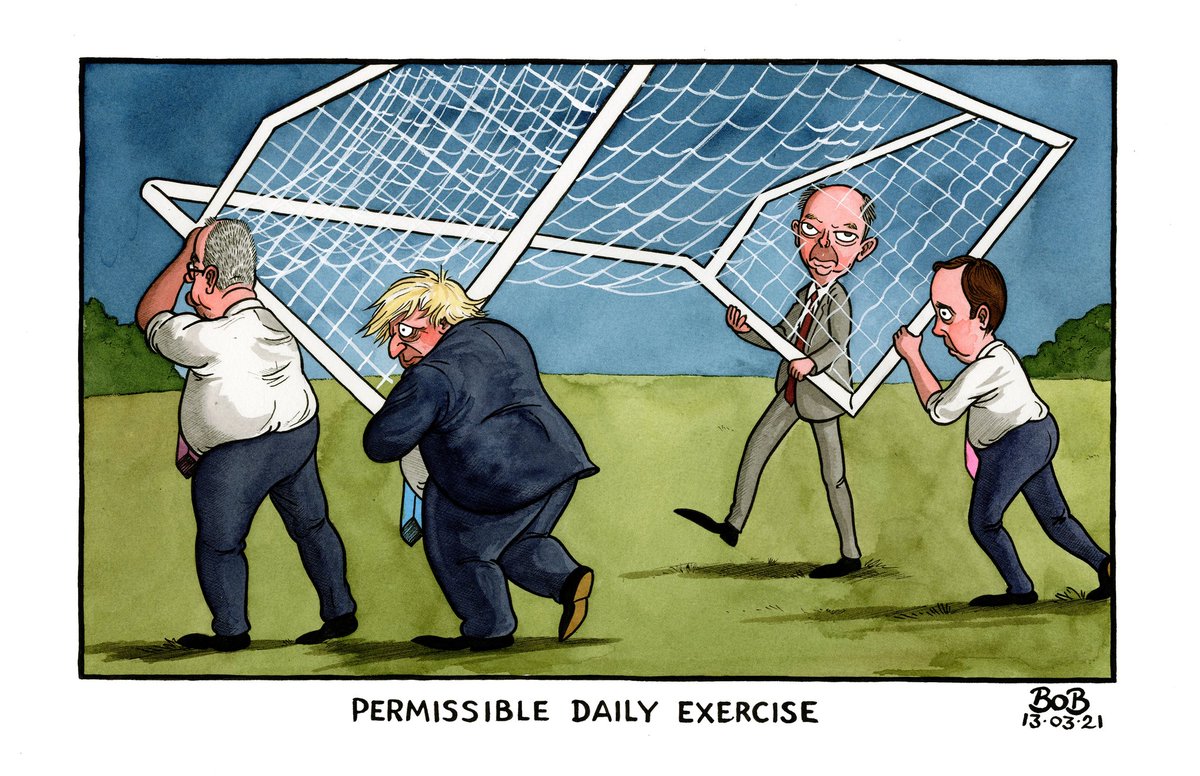We recently marked the first anniversary of “three weeks to flatten the curve”. It has been difficult at times to keep up with the latest requirements set by the Government to unlock Britain. Our vaccine rollout has been successful – almost half of our total population has received at least one dose of a Covid vaccine and more than six million people have received both. This was supposed to set us on “a one-way road to freedom” but the rhetoric seems, not for the first time, to have changed. Matt Hancock has suggested that freedom can now only be reclaimed through weekly mass testing.
MailOnline has compiled a list of all the times the Government has moved the goalposts when it comes to relaxing restrictions.
Ministers introduced the first lockdown last March in order to “flatten the curve” of Covid infections, preventing a crisis that would overwhelm hospitals.
People were ordered to stay in their homes to prevent the pandemic ripping through society and causing the NHS to come under strain it could not cope with.
Experts agreed infections would inevitably occur but that spreading them [sic] the cases over a longer period of time… would make it easier for hospitals to cope.
In an attempt to justify hitting the nuclear button on lockdown, the Prime Minister presented graphs at Downing Street press conferences to illustrate why the plan would bring the outbreak to manageable levels.
Striking a sombre tone on March 12th, Mr Johnson warned of severe disruption lasting for “many months”.
But the PM – who later publicly backed calls that Britain needed to learn to live with the virus, saying restrictions did not provide an “enduring solution” because the price was “too heavy” – refused to budge on easing lockdown until late in the summer, even though cases had dropped to negligible levels.
Restrictions weren’t drastically lifted until “Super Saturday” on July 4th, by which time just 45 Britons were dying of Covid each day, on average. For comparison, the current figure stands at 30.
Critics accused Number 10 of silently changing its Covid-fighting strategy, morphing from containing the virus to seemingly trying to eliminate it – which experts insist is impossible.
Cinemas, pubs and hairdressers were finally allowed to open again on July 4th…
In a calculated gamble designed to rescue Britain’s crippled economy, Mr Johnson hailed the move as being the “biggest step yet on the road to recovery”.
But, in a sign of the risks involved, he warned that the changes would be reversed immediately if people abused the rules and the epidemic began to take off again. …
And promising to never resort to another full-blown lockdown again, he admitted Number 10 needed to “move away from blanket, national measures, to targeted, local measures”, saying the Government would not hesitate to impose whack-a-mole-style restrictions if the virus started “running out of control again”.
But the PM failed to stick to his pledge, with nationwide restrictions creeping back into the Government’s arsenal from September, with the rule of six followed by a controversial 10pm curfew for pubs and restaurants.
Since Mr Johnson’s promise, England has been dragged through two separate attempts of tiered lockdowns and two full-blown national shutdowns.
Worth reading in full.











To join in with the discussion please make a donation to The Daily Sceptic.
Profanity and abuse will be removed and may lead to a permanent ban.